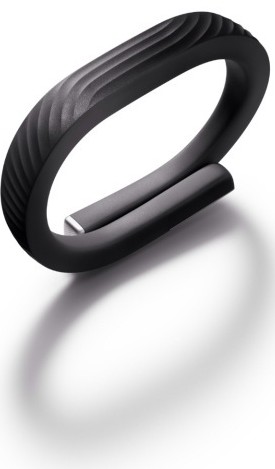
The largest earthquake to hit California’s Napa Valley in 25 years struck near the Bay Area early Sunday morning. The 6.0-magnitude quake hit at 3:20 a.m. local time near American Canyon, about 6 miles southwest of Napa, at a depth of 6.7 miles. Nearly 90 people were injured—and countless more woken up, disturbed, and generally freaked out. Thanks to the quantified self phenomenon—the always-on activity and sleep trackers many people now wear—we know more than ever about the psychic effects of such an event.
Jawbone, the San Francisco-based maker of fitness trackers, analyzed data from its users to see how the quake affected sleep across the Bay Area. The company’s UP device is a slinky bracelet that monitors movements and sleep. Here’s what Jawbone found:
Napa, Sonoma, Vallejo, and Fairfield were less than 15 miles from the epicenter. Almost all (93%) of the UP wearers in these cities suddenly woke up at 3:20AM when the quake struck. Farther from the epicenter, the impact was weaker and more people slept through the shaking. In San Francisco and Oakland, slightly more than half (55%) woke up. As we look even farther, the effect becomes progressively weaker—almost no UP wearers in Modesto and Santa Cruz (and others between 75 and 100 miles from the epicenter) were woken up by the earthquake, according to UP data.
Perhaps not surprisingly, once awoken, residents near the quake took a long time to get back to sleep. According to the company’s data, “45% of UP wearers less than 15 miles from the epicenter stayed up the rest of the night.” The visualization below, provided by Jawbone’s senior data scientist Brian Wilt, shows sleep changes based on proximity from the epicenter. The company says the results of its study are statistically significant.

[Jawbone]
More Must-Reads from TIME
- Inside Elon Musk’s War on Washington Meet the 2025 Women of the Year Why Do More Young Adults Have Cancer? Colman Domingo Leads With Radical Love 11 New Books to Read in February How to Get Better at Doing Things Alone Cecily Strong on Goober the Clown Column: The Rise of America’s Broligarchy
- Inside Elon Musk’s War on Washington
- Meet the 2025 Women of the Year
- Why Do More Young Adults Have Cancer?
- Colman Domingo Leads With Radical Love
- 11 New Books to Read in February
- How to Get Better at Doing Things Alone
- Cecily Strong on Goober the Clown
- Column: The Rise of America’s Broligarchy
Contact us at letters@time.com